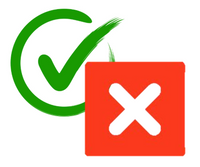SUSTAINABLE COMMERCE STAGE
Block 1: Private Labels as a Driver of Sustainable Growth
P 1.1 Affordable and Sustainable: How Private Labels Lead in Meeting Consumer Demand
- Balancing Quality with Affordability in Eco-Friendly Products
- Positioning Private Labels as Value-Driven Alternatives to Big Brands
- Leveraging Flexible Supply Chains to Respond to Sustainability Trends
P 1.2 The Sustainable Edge: Can Private Labels Outpace Big Brands?
- Agility in Adopting Sustainability: The Advantage of Private Labels
- Building Consumer Trust through Transparent Sustainability Claims
- Enhancing Local Sourcing through FMCG and Retailer Partnerships
P 1.3 Local Sourcing to Circular Packaging: Private Labels in the Sustainability Spotlight
- Enhancing Brand Loyalty through Locally Sourced Ingredients
- Reducing Waste through Circular Packaging Solutions
- Balancing Cost and Sustainability with Alternative Packaging
P 1.4 Private Label Premiumization: Profitability in Eco-Friendly Grocery Choices
- Creating Value Through Quality Ingredients and Sustainable Sourcing
- Balancing Affordability with Eco-Conscious Premium Features
- Using Eco-Friendly Packaging as a Premium Differentiator
Block 2: Sustainability-Driven Brand Loyalty and Consumer Engagement
P 2.1 Building Brand Trust Beyond Greenwashing: Authenticity in Sustainability Claims
- Establishing Clear, Verifiable Sustainability Metrics
- Highlighting Genuine Stories and Local Impact
- Consistent Transparency Across All Consumer Touchpoints
P 2.2 Eco-Certifications and Consumer Trust: Does the Label Make a Difference?
- Leveraging Recognized Certifications to Enhance Brand Credibility
- Educating Consumers on the Value Behind Each Certification
- Balancing Certification Costs with Consumer Perceived Value
P 2.3 Transparency and Loyalty: How Engaged Consumers Drive Sustainable Brands
- Providing Accessible and Honest Information on Sustainability Efforts
- Building Interactive Platforms for Consumer Feedback and Engagement
- Using Transparent Metrics to Highlight Progress and Areas for Improvement
P 2.4 The Sustainability Premium: Are Consumers Willing to Pay More for Green?
- Understanding Price Sensitivity in Sustainable Product Choices
- Positioning Sustainability as a Value-Added Benefit
- Differentiating Between Core and Premium Consumer Segments
Block 3: Lifecycle Innovation in FMCG and Grocery: Designing for Sustainability
P 3.1 From Production to Disposal: Designing FMCG for a Circular Economy
- Implementing Recyclable and Reusable Materials from the Start
- Extending Product Life Through Innovative Design and Materials
- Collaborating with Suppliers for End-of-Life Solutions
P. 3.2 Rethinking Waste: Sustainable Packaging Innovations in Grocery Retail
- Introducing Compostable and Biodegradable Packaging Options
- Minimizing Packaging Without Compromising Product Protection
- Utilizing Refillable and Reusable Packaging Models
P. 3.3 Managing Impact for Short Shelf Life Products: Waste Reduction in FMCG
- Optimizing Packaging to Extend Product Freshness
- Implementing Real-Time Demand Forecasting to Minimize Overproduction
- Collaborating with Retailers for Efficient Stock Rotation and Redistribution
P 3.4 Can Circular Models Pay Off in FMCG? A Practical Look at Profitability
- Analyzing Cost-Saving Opportunities in Reusable and Refillable Packaging
- Building Consumer Loyalty Through Sustainable Practices
- Evaluating Market Readiness and Consumer Willingness for Circular Solutions
If you’d like to review more stages, please return to the Content Review & Feedback page and select the stages of your interest. Once you’re ready, please send your comments to: Club369@conferences-united.pl.
